Why bet on imprinted concrete for the pool? Advantages
The imprinted concreteit is the favourite material of many users and construction companies to coat the area around the pool. A decorative pavement that is also functional, as it provides excellent resistance to UV rays and abrasion, among many others.
A highly recommended option due to the low cost it represents in comparison with the benefits it offers. Its ability to mimic all types of finishes and textures of much more expensive materials, such as marble, stone or wood, is one of the main reasons for its overwhelming success.
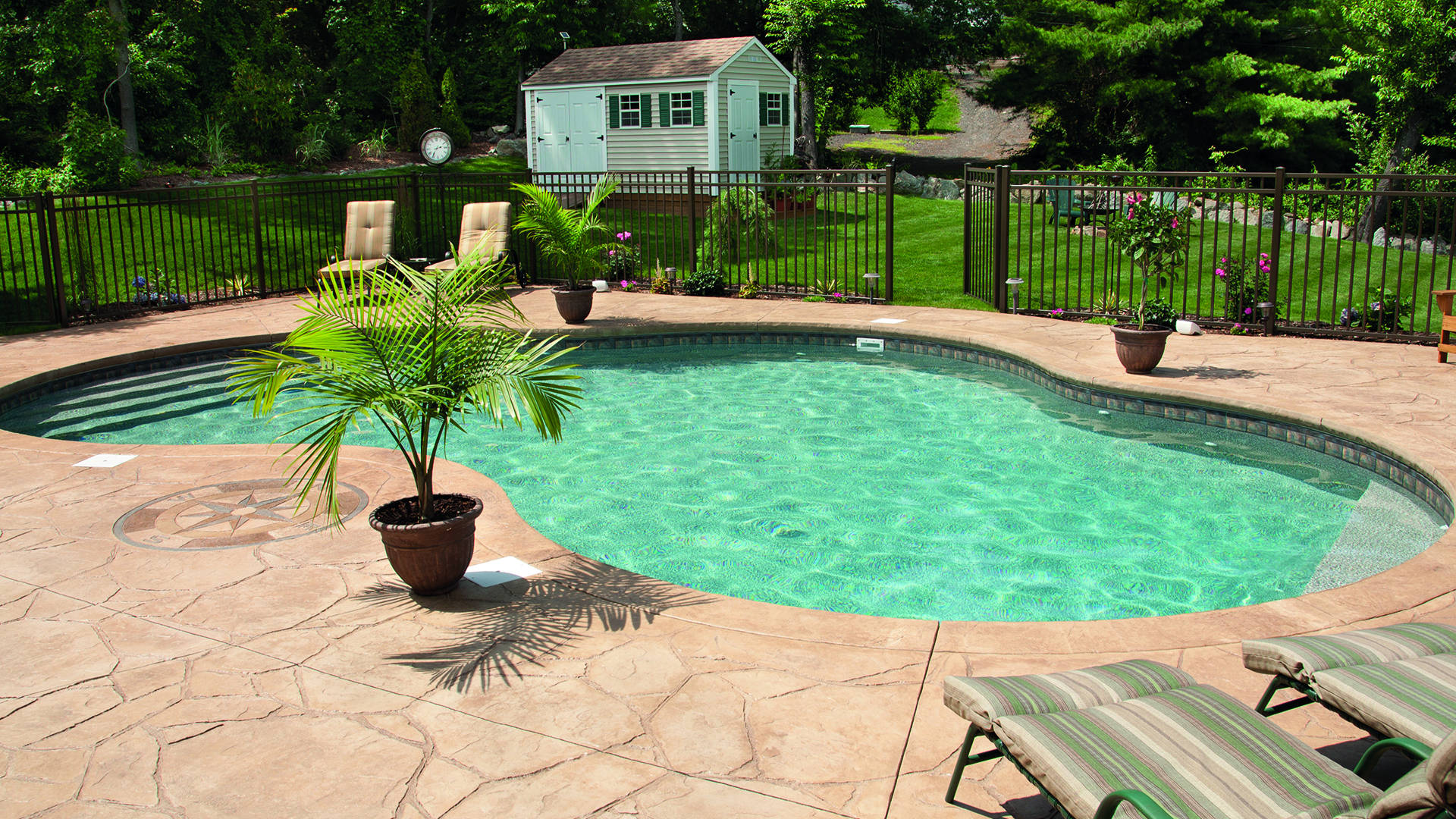
Why use imprinted concrete to decorate the pool
Choosing imprinted concrete as a decorative coating for the area around the pool is more than correct. Starting because it is a non-slip pavement, which provides safety against unwanted falls and slips. Not all materials can guarantee this finish.
Stamped concrete has the quality of being adaptable to the terrain and having an extraordinary hardness. It is a pavement that perfectly adjusts to all types of surfaces regardless of whether they have irregularities. The final finish will be completely homogeneous and resistant to erosion, temperature changes, wear, high traffic, etc.
Similarly, the low maintenance and investment required for this coating promotes its use to decorate the space around the pool to the detriment of other materials such as wood, for example. An option that is very much worth it for a myriad of advantages it provides.
Advantages of imprinted concrete for the pool
There are many advantages to using imprinted concrete around the pool. Below we develop the most important ones.
Provides protection against slips and falls
The moulds used as well as the resins applied to seal the support, give this type of concrete a non-slip character. The result is a very safe surface with much better grip where slips and falls have no place.
Prevent puddles of water from forming and weeds from growing
In relation to the previous advantage, imprinted concrete for swimming pools is very resistant to water erosion and excess moisture. Thanks to its porosity, it prevents the formation of water puddles and therefore, the pavement does not remain damp for a prolonged period. Hence, it is an ideal material for the area around the pool.
Resistant to cold-heat cycles
Stamped concrete tolerates the incidence of sunlight as well as rain and wind. Therefore, it is perfect for cladding outdoor spaces. Likewise, it is a very resistant material to wear by abrasion.
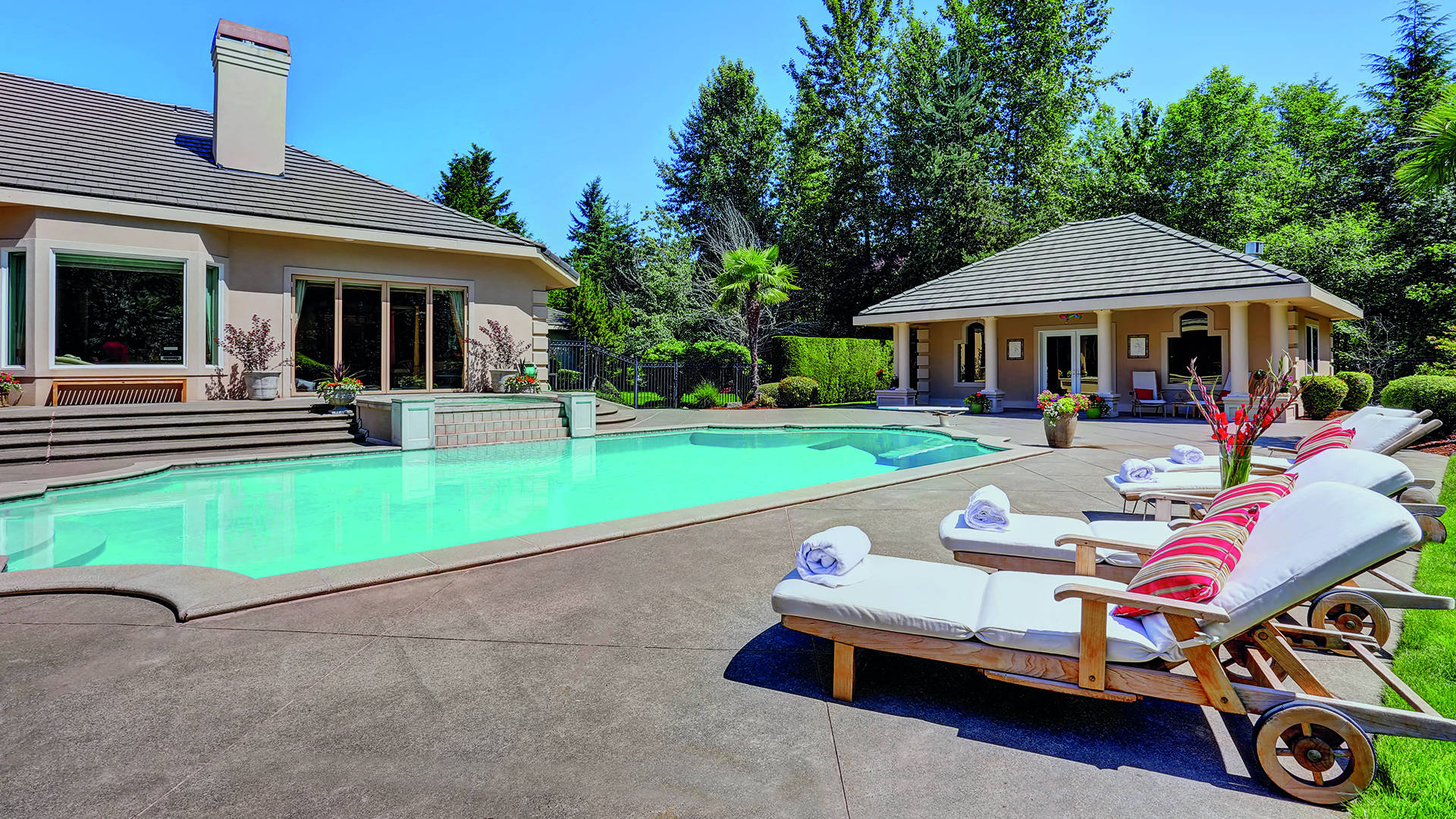
Provides a significant economic saving
The price is one of the most determining factors in the choice of one outdoor flooring or another. In the case of imprinted concrete even more so, since it is very affordable compared to other materials. You save on installation, maintenance and assembly while getting the same finish as brick, wood, ceramic or any other noble material.
Available in a wide range of finishes
Not everything is going to be functionality. Aesthetics are also important when we talk about the decoration of a pool. This coating meets both requirements without exception. Thanks to the wide variety of moulds and colours available, the finishes are endless. Finishes that fit perfectly with any design and style that you want to give to the garden in which the imprinted concrete pool is framed.
High durability and low maintenance pavement
Compared to other pavements, it is a material very easy to clean and keep in optimal condition. By preventing the accumulation of dirt and the growth of weeds, it is only necessary to wash occasionally with a bit of water and soap.
Most common problems of applying imprinted concrete around the pool
The imprinted concrete around the pool has more than enough benefits to justify its popularity. But that does not take away, that there are also a series of related drawbacks. We develop the most common ones.
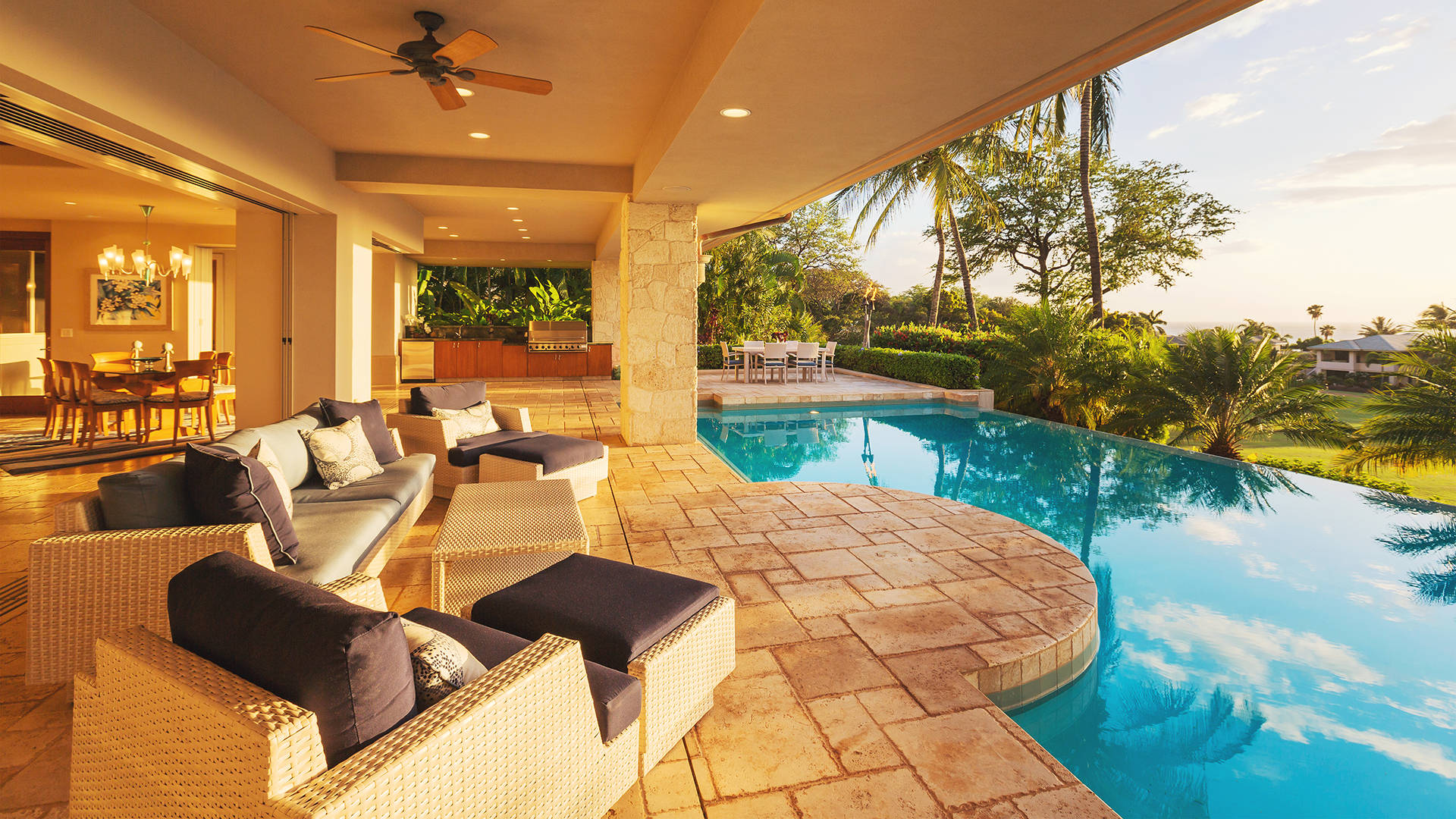
Saline water accumulation
One of the drawbacks is the formation of scales. The accumulation of saline water causes surface erosion, also affecting sealers or resins and causing scales to form. A type of water that in the event of a crack or small fissure in the pavement due to improper use or application of imprinted concrete, upon contact would cause defects in the resin layer.
An effect that can also be caused by wet-dry cycles and vice versa. When water evaporates, the crystals that form can break the bonds of the pavement and lift the concrete. It is very important to control at all times the salt levels, so that the pH is not too acidic.
Poor choice of imprinted mould for the pool
The relief and texture matter. And in the case of the pool even more so. Not all imprinted moulds offer the same degree of slip resistance, some can even be very slippery and generate unpleasant falls on the crown and edges of the pool. Therefore, care must be taken with the stamping to be carried out and not focus solely on aesthetics.
Create imprinted concrete pools in extreme climates
Extreme temperatures, high and low, can damage the imprinted concrete around the pool. Excessive heat or cold that can negatively affect the coating for various reasons:
- Premature dehydration that causes cracks.
- Too rapid hydration that causes less dense structures and, therefore, a decrease in pavement strength.
- Loss of consistency.
For all these reasons, it is essential to cure the concrete properly and increase the dose of polyfunctional additive.
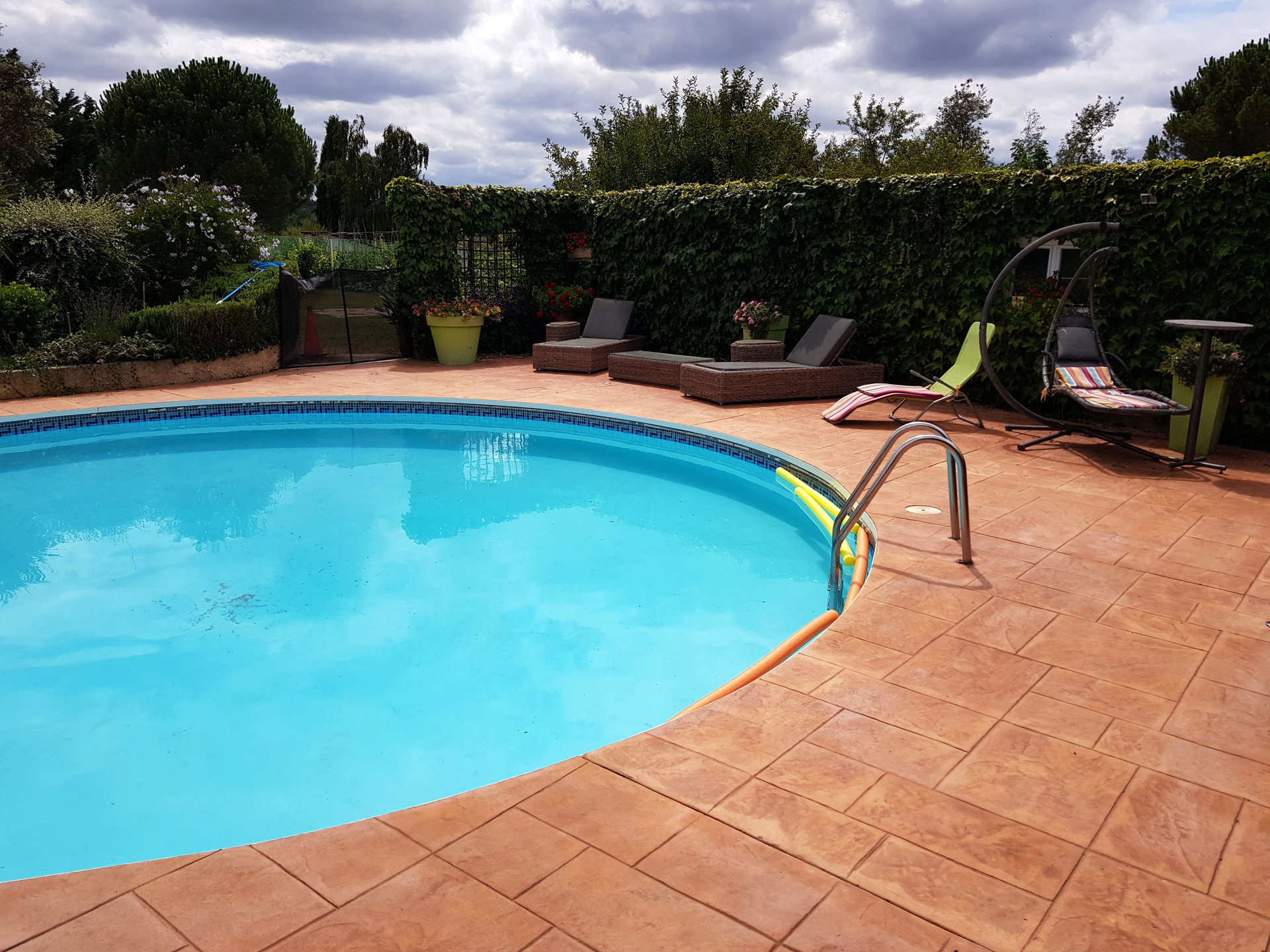
Phases of the application of imprinted concrete for pools
The application is quite simple and easy to execute. It is no more complicated than doing it on another type of pavement. Below, we explain the different steps and phases to implement the imprinted concrete around the pool.
1. Condition and treat the area around the pool
Before pouring the concrete, it is important to prepare the ground. The surface has to be homogeneous so that no unevenness or cracks are generated in the pavement. In the case of the area around the pool, the perimeter must be levelled in such a way that it is slightly higher than the pool itself.
2. Place the mesh and perform expansion joints
The mesh is very important to give breadth and consistency to the imprinted concrete pool. The ideal is to try to make it about 2 cm from the pavement. Once the imprinted concrete system is finished, the expansion joints would be executed to obtain a higher quality decorative finish. Since what the joints do is prevent the pavement from cracking.
3. Apply, spread and level the imprinted concrete for pool
When the surface is perfectly conditioned, it's time to pour and spread the concrete around the pool. If the height of the pour exceeds 1.20 meters, we recommend using gutters. Once distributed, level and smooth the concrete to flatten the surface.
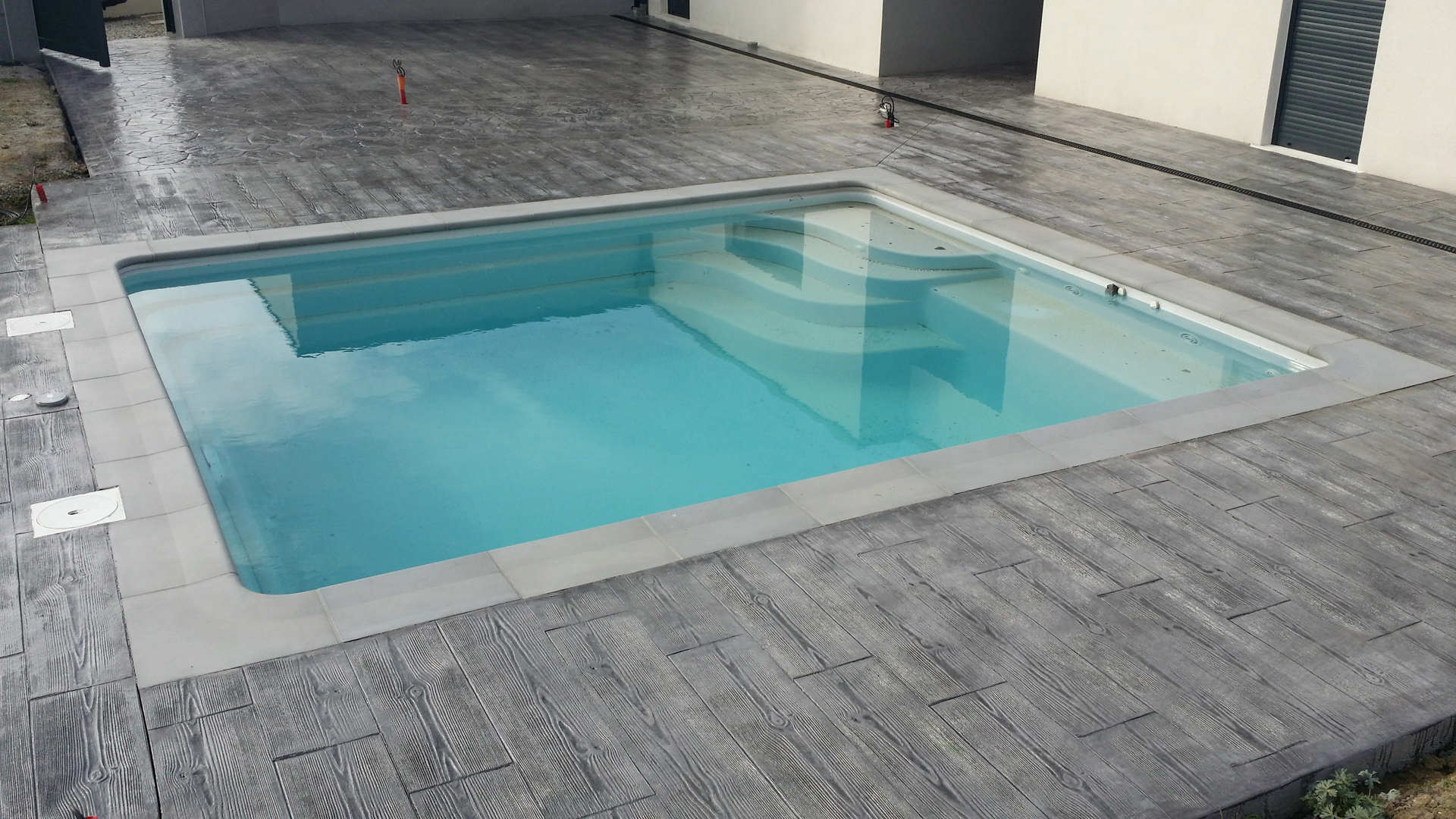
4. Pigment the imprinted concrete for pool
One of the most important phases of applying imprinted concrete for a pool: giving it personality with the use of a colour hardener. Check that the concrete has set a bit before sprinkling the hardener to get a better finish. In this regard, we have developed Stonecem Floor®, a pigmented imprinted mortar.
Another option, equally valid although a little less traditional and known, is to pigment the imprinted concrete for the pool by mass colouring. A method for which we have developed Arcocem Fast®.
5. Use release agent
After colouring the concrete, a release agent must be added, which can be in powder or liquid form. The purpose of this product is to prevent the concrete from entering the moulds that give the pavement its final texture and design.
6. Stamp the imprinted moulds around the pool
Subsequently, the imprinted moulds are stamped in the area around the pool. Moulds that can have the most varied shapes: tiles, stone, wood, etc. Allow the imprinted concrete for the pool to finish setting and hardening. When it is completely dry, remove the moulds.
7. Wash and protect the imprinted concrete of the pool
When the pavement is completely dry, the surface will need to be cleaned to remove any excess aggregates that may have been impregnated. A cleaning that is usually done with pressurised water. Next, apply the resin to protect the area around the pool.
Finished imprinted concrete pool: moulds and colours
Theprinted mouldsthey are responsible for giving texture and shape to this pavement. In the market there is a wide variety to satisfy the tastes and needs of each client. Among the most demanded molds for imprinted concrete for swimming pools are those of wood (for their relief and aesthetics), those of stone (especially those of English stone for their enormous resemblance to ceramics) and blanket type molds (although their relief is less, it is more comfortable to step on).
Combined with the vast range of colours available, the finishes are endless. As a general rule, light colours such as white, grey, ochre or earth tones are most commonly used for the area surrounding the imprinted concrete pool.
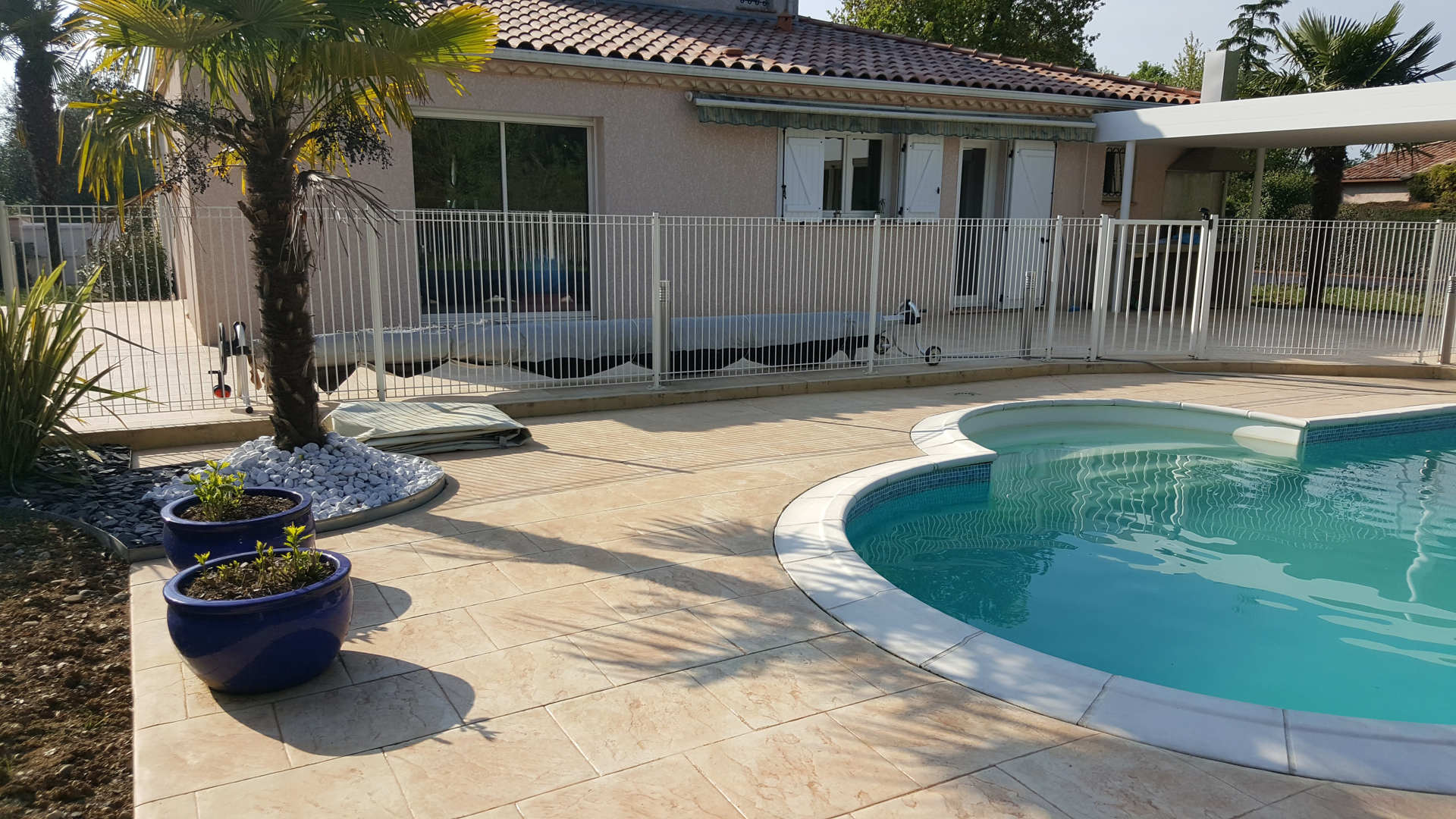
Price of imprinted concrete pool per square metre
The price of this pavement is subject to various factors that can generate fluctuations in the cost per square metre. The type of mould or design chosen, the particular rates of each applicator, the quality of the supplied materials, the dimensions of the pool, the complexity of the work and the geographical area are just some of them.
On this last point, it should be noted that there are some countries that legally require the use of a special varnish that provides a slip resistance level 3 to the pavement around the pool area. This is the case in our country. A requirement that, obviously, increases the cost. Generally speaking, the price of imprinted concrete for pools per m2 is between 40 and 100 euros approximately in Spain.
Application and maintenance tips for imprinted concrete in the pool
Although imprinted concrete is a coating of excellent durability and resistance, there are a series of elements that should be taken into account to get the most out of this type of paving around the pool. Below, we detail the main application and maintenance tips that experts advise to keep in mind.
Use imprinted moulds with greater slip resistance
Unlike other materials, stamped concrete itself provides a non-slip character. Mainly thanks to the texture and relief of the imprinted moulds themselves. A benefit that validates, of course, its widespread use in the pool area. However, there are some imprinted moulds that enjoy a higher degree of non-slip and these are the ones that experts recommend using if possible. It all depends on the design you want to make and each person's budget.
Opt for light colours for the imprinted concrete in the pool
It is proven that light colours better disguise the stains caused by the pool water deposits. So, as much as possible, we should avoid using dark shades.
Avoid leaving a thick layer of resin
As far as possible, it is necessary to avoid applying a thick layer of resin. Excess is one of the most recurring problems in the application of imprinted concrete in the pool. Abundance can trigger notable colour differences in the pavement, a loss of shine from the resin, the generation of white stains or the appearance of bubbles during the curing time, among others.
Clean the surface from time to time
By creating a continuous coating, the imprinted concrete for swimming pools prevents the growth of weeds as well as the accumulation of dirt in the joints. Even so, professionals recommend cleaning the pavement occasionally in a superficial way with water and mild detergent.
Renew the resin of the imprinted concrete around the pool every 2-3 years
Similarly, it is advisable to restore the resin in a period of approximately 2-3 years. Why? Because over time the stamped concrete loses shine and colour due to the wear of the resin. As we must not forget that it is a pavement constantly exposed to weather conditions.
Wash the imprinted concrete pool after each use
One of the most important tips. After each swim in the pool, it is advisable to wash the surface with a hose. This way, possible accumulations of saline water on the concrete lining are prevented.
Subscribe to our newsletter
Receive in your email tips for the application and care of microcement, the latest trends and news from Topciment products.




